Events
The IoT summit
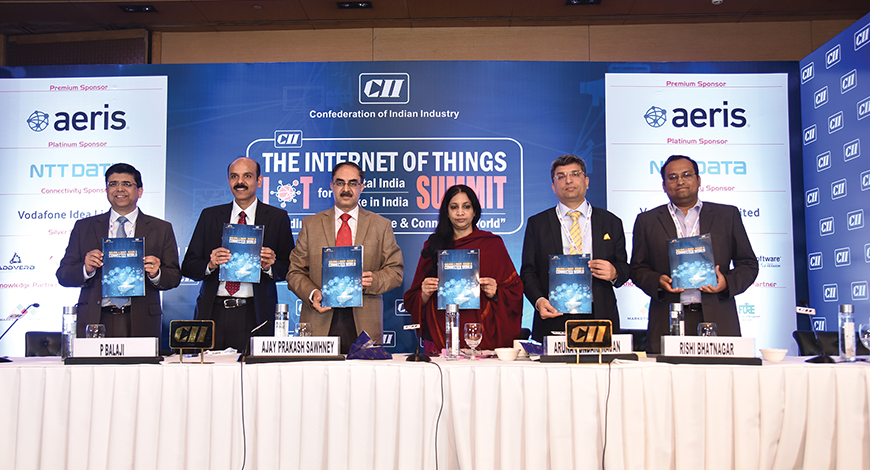
As the Internet of Things (IoT) gain an ever-larger foothold in the market, value-added resellers are rapidly becoming top resources for security issues, selection of different and overall advantages for businesses of every size. IoT is thus likely to keep speeding along in terms of adoption and usage, especially with major programs.
The global industrial sector is poised to undergo a fundamental structural change akin to the industrial revolution, as we usher in IoT. Equipment is becoming more digitized and more connected, establishing networks between machines, humans, and the internet, leading to the creation of new ecosystems that enable higher productivity, better energy efficiency, and higher profitability. While industry is still in the nascent stages of adoption, experts believe the IoT opportunity for industrials could amount to USD 2 trillion by 2020. The IoT has the potential to impact everything from new product opportunities, to shop-floor optimization, to factory worker efficiency gains that will power top-line and bottom-line gains.
During the summit, a knowledge report titled Building a Smart, Secure, & Connected World was released. The summit was attended by over 200 delegates from the IT, manufacturing, as well as services sectors.
Expert Speak

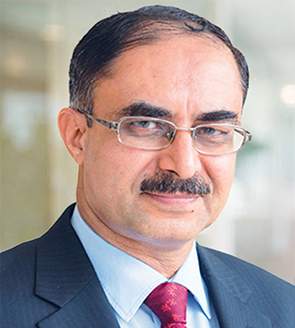 Ajay P Sawhney
Ajay P Sawhney
Secretary,
Ministry of Electronics and IT, Government of India
“IoT is not only a set of technology, but it is also a profusion of technologies, which are all interconnected. There is a sudden surge in the number of data centers and they are valuable enough to be analyzed and acted upon. It is this need of data analytics that puts India ahead globally because India is continuously innovating in this field. India has the capacity, talent, and the opportunity to become the leader in IoT.
Machine learning, deep learning, AI, the technologies related to drones and robotics are taking tremendous shape today in the country. My favorite story is of Andhra Pradesh. In a recent interaction, The Secretary, Ministry of Skill Development and Entrepreneurship, revealed that his ministry were training drone navigators – 25000 pilots for its 12500 villages, two drones per village. The state represents 4 percent of India’s population. Drones are being assembled in Vishakhapatnam by three or four companies.
What else do we have in place? Our strength in providing software services is acknowledged, as is our superiority in design. Every major international technology company has a presence in India. From outsourcing, they have graduated to core R&D. The core design and development of products and services for the world is being done in India by Indian engineers and Indian resources.
And now we are filling the gap in electronics too. Having commenced with assembly of mobile phones, we now have SMT lines, PCB assembly lines, and the entire supply chain in place. The best engineering colleges are there in every state, there are BPOs in more than 100 Indian cities, which are now getting into all kinds of projects, many small innovation companies are springing up continuously, and then there is IoT.
Today, it is one of those rare periods in history when disruption is imminent, bringing with it tremendous opportunity. India has recently approved the National Digital Communications Policy, the National Electronics Policy 2019, the National Policy on Software Products, and are close tobringing out a National Mission on Language Technology. It is impacting every business, every life. It is time to step up pace, take risks, take the lead. We have the capability, access to technology, and the talent. And what we have in tremendous abundance, more than any other geography in the world, is unsolved problems. We have the largest number of unsolved problems in agriculture, healthcare, education, financial inclusion, pollution, traffic control – that is the biggest asset a country can have. And it cannot be resolved by IT, telecom, or software industries alone. Every sector will have to go digital and take the lead, and adopt IoT. And it is entirely possible. Given the number of institutions, which are developing simple and cheap solutions and products, suddenly it is possible. It is time for the core industry, for the mainstream industry, to put its full weight behind the new technologies and make all this happen.”

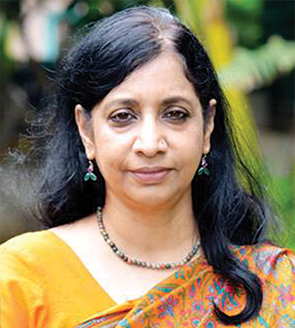 Aruna Sundararajan
Aruna Sundararajan
Chairperson, DCC and Secretary, DoT, Ministry of Communications
“India is in a very strong position, both in terms of the kind of growth that we have seen in recent years, thanks to the TSPs, and also because some of the largest investments in telecom in the world are happening in the Indian market. Global companies are responding to the Indian market on a global scale, where the CEOs have demonstrated that they are committed to the Indian market, not just in terms of the level of investments, but also in terms of innovation they are second to none. There has been doubling of tower infrastructure and optics fiber infrastructure in the last three years, and going forward, not only will India see one of the fastest transitions from 3G to 4G, but all players have positioned themselves strongly to also harness 5G. And 5G is one of the key catalysts for IoT, simply because it makes it possible to transmit much greater amounts of data at much higher speeds and with much greater quality, which makes it possible for us to launch several next-generation services in India.
India is currently ranked as one of the most promising hotbeds of IoT innovations in the world. We have 1250 startups, which are working in IoT in healthcare, agriculture, energy, utilities, smart spaces, connected spaces, covering the entire spectrum. We are beginning to see the emergence of platforms in this area. Thanks to the convergence of technology, companies as Tata, Mahindra, Infosys, and a host of other companies are partnering with the telcos and with other technology companies to create platforms, and platforms-as-a-service. And the big change is Indian companies are now present across the spectrum. Be it design, network infrastructure, cloud, storage, security, routers, the nodes that is the sensors, platforms, end applications, in all segments of the ecosystem. With this combination of global talent and presence of global companies and Indian startups, the entire IoT eco-system is ready to see exponential growth in times to come. And the government will lay the framework for the robust growth of IoT. DoT is ensuring that progress is accelerated in this area.
On 5G, we are working very closely with the entire eco-system so that 5G deployments in India happen on par with the rest of the world. The 13-digit numbering scheme in India has been designed, and the KYC for SIMS from end-to-end announced. TEC is working on M2M standards and will release them within the next 60 days. A core group is also working on the standards with TSDSI, because just as there is an India stack, we are gearing for an India IoT stack, which is open, interoperable, and will allow both services and solutions to be built on top of this platform.
As Indian business houses are readying themselves to become global, they are happily embracing innovative technologies like IoT and data analytics. The kind of innovations happening in the IoT and data analytics sectors in India is unimaginable.
The Government of India too is working toward creating a viable model for private players to collaborate with the government initiatives and bring forth the holistic development. India, in the last few years, experienced the fast transition from 3G to 4G. India is now ready to witness and guide this paradigm shift in information technology from 4G to 5G now.”

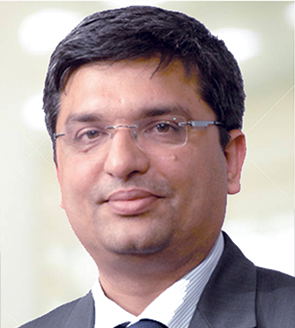 Dr. Rishi Mohan Bhatnagar
Dr. Rishi Mohan Bhatnagar
Summit Chairman & President,
Aeris Communications India
“IoT has emerged as a game changer in India for many sectors including healthcare, agriculture, telecom, and manufacturing amongst others. It is a welcome move by the government for approving the software product policy and this will further enhance the growth of IT sector in India”.

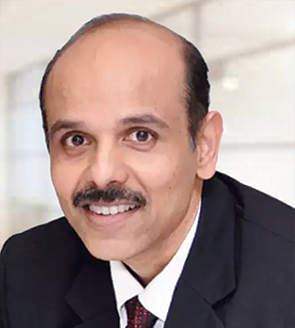 P Balaji
P Balaji
Chief Regulatory and Corporate Affairs Officer,
Vodafone Idea Limited
“Vodafone Idea is deeply committed to make IoT happen in a big way. We believe that in the next few years, India will have 7 percent of deployment of the entire IoT devices in the world. India, a trillion dollar digital economy by 2030, will by then be driven by affordable devices, cloud analytics, and IoT, and the progressive policies of the DoT are providing the right framework for it to happen.
There are three dimensions to IoT – the industrial side, the smart cities, and consumer IoT space. A recent Vodafone study, the IoT Barometer Report 2018-19 made some interesting observations. About 34 percent of companies polled across different verticals are using IoT, and out of this 34 percent, nearly three quarters have deployed IoT in mission-critical applications. 85 percent of the adopters are using IoT to increase revenue, 87 percent are seeing significant improvement in IoT investment in terms of returns, and 74 percent are committing that they are getting competitive advantage and are able to pull away business from the competitors who are not deploying IoT. Conclusively, digital transformation of countries, companies, and cities is not possible anymore without IoT being an intrinsic part of planning and implementation.
As an organization we too are building deep capabilities in terms of use cases, customer base, and capability of our team to address industrial, smart city, and consumer IoT. Our 5 million live IoT connections in India are transforming businesses across varied sectors, such as automotive, manufacturing, BFSI, healthcare, and retail.
We are now investing in narrowband IoT and in this space too, India has the opportunity to lead and drive the ecosystem on an end-to-end basis. Whether it is SIM management platform or the entire software, where a partner framework is being put together in India, it is being done in a robust manner, with no dependence on external data flows.
We are working on forming partnerships with key players in the IoT space for co-creating solutions to address the growing market – whether it is the Suzuki Connect flagship solution based on a telematics control unit, Mahindra Reva’s electric car e2o, which supports telematics, the Escorts group tractors powered by IoT solutions, JCB’s LiveLink telematics system for its construction machines, Diabetic Care, Coca Cola deploying IoT-enabled connected coolers for understanding the behavior of consumers and using the information in enhancing customers experience; or Diabetic Care, the remote diabetic treatment – applications are limitless, and the potential immense.”
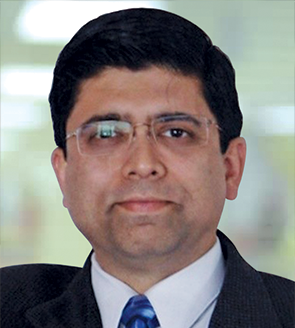 Dr. Harsh Vinayak
Dr. Harsh Vinayak
Senior Vice President,
NTT DATA
“Globally, NTT DATA has been at the forefront of such innovations. We spend USD 2.5 billion on R&D alone every year and part of that goes into developing next-generation IoT platform frameworks.
We had undertaken a traffic reduction study in Guiyang, Guizhou province in China. The study took place in the northwest corner of Guiyang, which historically suffers from traffic congestion, and had a 12-hour traffic jam. The study collected data, such as the license plate number, from passing traffic for 3 months. NTT identified 60 million cars passing through 170 cameras at the intersections. This was analyzed and fed into a data set that included the road and traffic information. A neural network brain was constructed, and a simulation then analyzed the impact of changing multiple parameters on the traffic signals. These multiple results were evaluated and the ideal parameters identified. The settings on traffic signals were then updated to maximize flow. Parameters for traffic signals were updated. 220 signals on 19 key junctions across the city were optimized. This led to a reduction in traffic congestion by 7 percent on average. The peak reduction was during evening rush hour, where it was down by as much as 26 percent. This was achieved by increasing the number of vehicles passing through an intersection by 6.7 percent on average and 25 percent at the highest point in the mornings. A small example, but it is happening!
The next one is a larger example. In July 2005, PTV, in the city of Melbourne, Victoria, Australia, needed to upgrade their ticketing system, from physical cards to electronics, for their multi-modal transport, buses, trams, trains, and boats. NTT DATA delivered myki. It was created using a flexible system with open architecture and off-the-shelf components. The mobile myki open-architecture design facilitates new feature integration, and enables a seamless transition to accommodate mobile payments. The open-system design also provides PTV the flexibility to select and quickly integrate and implement new devices, vendors, and pluggable interfaces available. The myki system enables PTV to improve transportation efficiency and long-term planning for more than 15 million mass transit smartcards and 24,000 devices on trains, trams, and buses across the state of Victoria. NTT DATA also provides end-to-end supply chain and operational management of the myki system, including 24×7 helpdesk support, training, data management, and audit and compliance reporting. Mobile myki has grown from five million to more than 585 million trips per year. It is one of the first and largest public transportation networks in the world to implement mobile ticketing technology across multiple modes without requiring new infrastructure or equipment. Mobile myki allows PTV to deliver new technology without requiring the replacement of legacy systems.
We have been doing this project for the past 13 years, and it took us 8 years to implement it. It was not easy, it never is!”















You must be logged in to post a comment Login